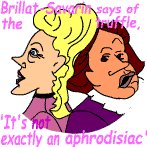Truffles
Created | Updated Jun 7, 2011
Updated 14 February 2010

There are at least 60 species of truffle worldwide, at least 20 of which are found in Europe. The most famous and sought after truffle is a subterranean fungus that is harvested mainly in France and, to a lesser extent, in Spain: black truffles in Perigord and white truffles in Piedmont. There are even aromatic truffles available from the state of Oregon, in the United States of America.
The most prized are, of course, the Black Truffle (Tuber melanosporum), and the White Truffle (either Tuber separans or Tuber levissimum).
Truffles exude an intense and distinctive, earthy aroma, that is reminiscent of garlic but have very little actual taste. Their taste is bland even somewhat chewy, when shaved, but can transform a dish by their smell alone.
The Larousse Gastronomique1 gives three pages of recipes for preparing truffles, which is an indication of their relative importance in haute cuisine. By comparison, jam gets slightly less than two pages in this fine reference work.
Truffles tend to be fabulously expensive, a side-effect of the fact that they are not commercially cultivated. Rather, they are gathered in the woods, between November and May, by cranky old French truffle-hunters who use either specially-trained dogs or specially-trained pigs to locate the fungi by smell. Truffles prefer loose, humid soil, and nourish themselves on the roots of oak or elm trees.
Well-renowned gastronome Brillat-Savarin2 says of the truffle: The truffle is not exactly an aphrodisiac, but it tends to make women more tender and men more likeable.
Care must be taken when purchasing truffles. The truffle experience is so desired that science investigated the fungi and discovered several of the essential chemical ingredients that made the truffle so distinctive. They can now produce these substances, sometimes in mixtures, in bulk. Chefs, who were amazed at how inexpensive truffle oil (a neutral oil infused through the introduction of raw truffle) had become, discovered that their treasured bottles of oil often had no actual truffle in them.
In addition, some of the truffles that restaurants were buying have been found to be a lower grade of truffle that has been treated with the artificially created essences. Let the buyer beware, including those buying raw ingredients for the restaurants.
For some reason, the term truffle is also applied to round chocolates with a creamy filling purveyed by firms such as Godiva. This is most likely because the round dark shape is reminiscent of that of an actual truffle, at least of the black ones. There is, however, no similarity in taste... probably a good thing, as mushroom-flavoured chocolates probably would not sell at all well.
Conversely, if one is ordering a truffle omelette, one should not expect to find that it contains any chocolate.

